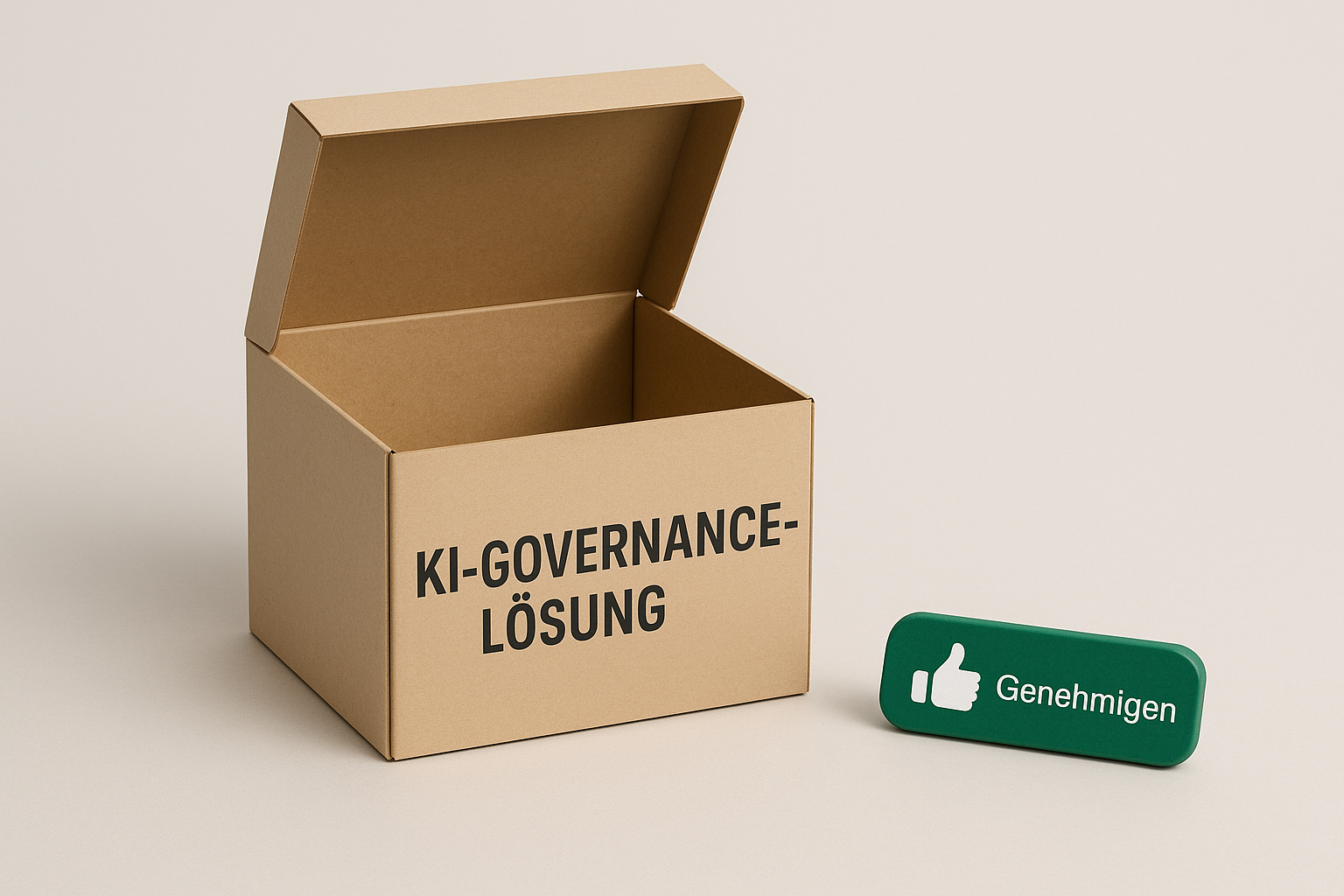1 min read
When Green Dashboards Deceive: Lessons from the Microsoft Copilot Incident
Dashboards were green, reports were clean — yet the logs weren’t what they seemed. 👉 Heise: "Microsoft Copilot verfälschte monatelang...
Hier finden Sie weitere spannende Links und die Möglichkeit mit uns in Kontakt zu treten.
Beginnen Sie mit der schnellen Analyse. Diese Services liefern Ihnen die strategische Standortbestimmung und eine klare To-Do-Liste, um Risiken sofort zu managen.
Übersetzen Sie Regulierung in praktikable Prozesse. Aufbau des Governance-Fundaments, Implementierung klarer Rollen und die dauerhafte Absicherung.
Sichern Sie den Erfolg durch interne Kompetenz. Unsere Trainings befähigen Ihre Teams, Governance direkt in Code und Prozesse umzusetzen.
Dieser Bereich dient als zentrale Quelle für fundierte Analysen und praxisnahe Frameworks. Greifen Sie auf unser dokumentiertes Wissen zu, um regulatorische Komplexität zu durchdringen, strategische Risiken zu managen und Compliance-Anforderungen effizient in Ihre Organisation zu implementieren.

We’ve spent months pondering what “human-in-the-loop” really means in the wild; actual production workflows that have customer impact. What I keep finding is a grave mistake: a token “approve” click slapped on at the end.
That charade of control doesn’t catch hallucinations, bias, or subtle errors—it just creates a false sense of safety. The trickiest hazards aren’t even the models; they’re our wrong assumptions about what AI and humans are actually doing together. This post is a blueprint for moving from performative oversight to provable control.
Those slick “LinkedIn post” automations that dump a finished draft into Slack for a thumbs-up are great demos and bad governance. Why?
No diff, no discipline: Slack shows blobs, not line-by-line deltas. Reviewers can’t see what changed, why it changed, or where risk concentrates.
Context collapse: Claims, sources, and rationale aren’t reviewable in place; you’re approving vibes, not evidence.
Ephemeral accountability: Approvals get buried in threads. Good luck reconstructing who approved which risky sentence three months later.
Automation bias on steroids: Under time pressure, humans default to “looks good.” A single “ship it” emoji is not oversight.
If your safety net is a chat message, you don’t have a safety net—you have theater.
Late discovery is expensive and leaky. Classic and modern evidence agree: the later you catch defects, the higher the cost and the more escapes you get. Boehm’s economics and Boehm–Basili’s defect-reduction work underpin today’s “shift-left” doctrine—don’t wait for an end-gate to find problems. staff.emu.edu.trCMU School of Computer Science
One-shot reviews miss functional issues. Large, end-stage reviews catch surprisingly few blocking defects; most comments skew toward maintainability, not correctness—strong sign that a final sign-off isn’t a reliable quality filter on its own.
Quality correlates with breadth and iteration, not a lone approver. Empirical studies show that review coverage and participation (more eyes, earlier, across more changes) are linked to fewer post-release defects—counter to the “single decider at the end” model.
Pairing beats solo at the point of creation. A meta-analysis finds a positive quality effect from pair programming. Translation: embedding a second brain during production outperforms asking one brain to rubber-stamp at the finish line.
Automation before approval raises the floor. Continuous Integration (CI) and pre-merge checks surface issues early, shorten feedback loops, and make human review more effective; CI acts as a “silent helper” to code reviews rather than leaving correctness to a last click.
Bottom line: the weight of engineering evidence favors early, iterative, multi-signal controls (tests, CI, multiple reviewers, pairing) over a single late approval. If you rely on one end-gate, you’re optimizing for speed—not reliability.
I’ve spent months pondering what “human-in-the-loop” really means in the wild; actual production workflows that have customer impact. What I keep finding is a grave mistake: a token “approve” click slapped on at the end.
That charade of control doesn’t catch hallucinations, bias, or subtle errors—it just creates a false sense of safety. The trickiest hazards aren’t even the models; they’re our wrong assumptions about what AI and humans are actually doing together. This post is a blueprint for moving from performative oversight to provable control.
Those slick “LinkedIn post” automations that dump a finished draft into Slack for a thumbs-up are great demos and bad governance. Why?
No diff, no discipline: Slack shows blobs, not line-by-line deltas. Reviewers can’t see what changed, why it changed, or where risk concentrates.
Context collapse: Claims, sources, and rationale aren’t reviewable in place; you’re approving vibes, not evidence.
Ephemeral accountability: Approvals get buried in threads. Good luck reconstructing who approved which risky sentence three months later.
Automation bias on steroids: Under time pressure, humans default to “looks good.” A single “ship it” emoji is not oversight.
If your safety net is a chat message, you don’t have a safety net—you have theater.
Late discovery is expensive and leaky. Classic and modern evidence agree: the later you catch defects, the higher the cost and the more escapes you get. Boehm’s economics and Boehm–Basili’s defect-reduction work underpin today’s “shift-left” doctrine—don’t wait for an end-gate to find problems.
One-shot reviews miss functional issues. Large, end-stage reviews catch surprisingly few blocking defects; most comments skew toward maintainability, not correctness—strong sign that a final sign-off isn’t a reliable quality filter on its own.
Quality correlates with breadth and iteration, not a lone approver. Empirical studies show that review coverage and participation (more eyes, earlier, across more changes) are linked to fewer post-release defects—counter to the “single decider at the end” model.
Pairing beats solo at the point of creation. A meta-analysis finds a positive quality effect from pair programming. Translation: embedding a second brain during production outperforms asking one brain to rubber-stamp at the finish line.
Automation before approval raises the floor. Continuous Integration (CI) and pre-merge checks surface issues early, shorten feedback loops, and make human review more effective; CI acts as a “silent helper” to code reviews rather than leaving correctness to a last click.
Bottom line: the weight of engineering evidence favors early, iterative, multi-signal controls (tests, CI, multiple reviewers, pairing) over a single late approval. If you rely on one end-gate, you’re optimizing for speed—not reliability.
When the only human step is an end-stage approval, you’ve optimized for speed, not judgment. Humans under volume and time pressure over-trust automation and under-search for disconfirming evidence. The fix is not “try harder”; it’s design the workflow so the easy path is the safe path: smaller review units, visible diffs, explicit rationale, and mandatory gates.
Source triage & framing (before generation)
Curate inputs and log exclusions. If the source is weak, the draft is weak—no model fixes that.
Prompt & policy calibration (pre-commit)
Prompts and constraints are versioned. Policy changes create a PR, reviewed by Legal/Brand like any other artifact.
Intermediate sampling with uncertainty routing (during generation)
The system surfaces low-confidence or high-impact passages for targeted human review before the full draft congeals.
Role-based inline review (in the PR)
SME: factual accuracy and scope
Legal/Compliance: claims, PII, defamation, regulatory fit
Brand/Comms: tone, audience, channel fit
Each comment ties to a specific line and must be resolved before merge.
Final editorial + feedback loop (post-merge)
Corrections and escalations flow back into prompts, rules, and evaluators so the same error doesn’t repeat next week.
“AI handles nuance at scale.” Only with hard boundaries and human checkpoints. Otherwise, you’re scaling confident nonsense.
“Human review is too slow.” It’s slow when you ask humans to stare at blobs. It’s fast when diffs, roles, and gates are clear.
“More content = more engagement.” Volume raises cognitive load and rubber-stamping. One public mistake erodes trust faster than ten flawless posts build it.
If you’re serious about upgrading from “approve in Slack” to provable control, we at Komplyzen helps you implement:
HITL by design: Roles, gates, OWNERS and merge policies tailored to your risk profile.
Policy-to-prompt pipelines: Turn legal/brand rules into testable checks with evaluation sets and CI gates.
Uncertainty routing: Auto-surface risky passages to the right reviewer; reduce human time where it’s low value.
Audit-ready logging: End-to-end traceability for regulators, clients, and boards—without screenshot archaeology.
Content-as-code tooling: Repos, templates, preview builds, and connectors for LinkedIn, Webflow/WordPress, and ESPs.
Contact us or DM me if you want to pressure-test your current workflow. We’ll show you exactly where your “final-only” gate leaks—and replace approval theater with shipping discipline.
1 min read
Dashboards were green, reports were clean — yet the logs weren’t what they seemed. 👉 Heise: "Microsoft Copilot verfälschte monatelang...

2 min read
Twenty years ago, companies were racing to digitize customer data. CRM systems, analytics platforms and e-commerce exploded. Governance was an...

1 min read
KPMG recently unveiled a “TaxBot” powered by a 100-page prompt to generate draft tax advice in a single day. On paper, that looks impressive. In...